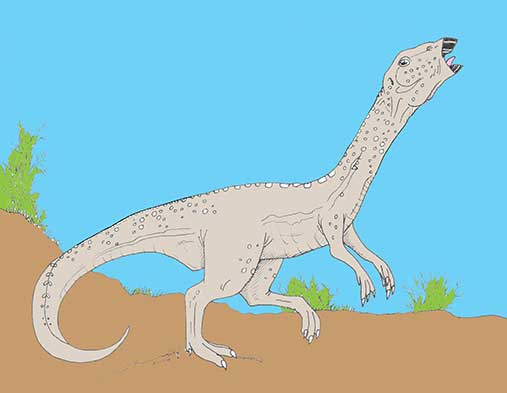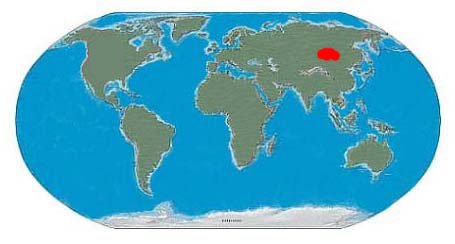Sign up for Lesson Plans, discounts & more!
Conchoraptor
Small Dino Big Beak

Conchoraptor was a small, bipedal dinosaur that lived during the late Cretaceous period, between 70 and 66 million years ago. It only stood between 3 and 6 feet high and weighed . It did not have teeth, but a strong beak, possibly to feed on mollusks by crushing their shells to get the soft meat inside.
Name |
Conchoraptor |
Classification |
Saurischian-Theropod |
Food |
Carnivore |
Length |
3-6 feet |
height |
3 feet |
weight |
20 pounds |
Range |
Mongolia |
Time Period |
Late Cretaceous Period |
The first Conchoraptor fossils found, was discovered in 1971, on an expedition in Mongolia. Conchoraptor was a relative of another type of dinosaur, called an Oviraptor. The head of Oviraptor was decorated with bony crests, but this specimen had no such decoration. When the fossil was found, it was believed to be a young oviraptor, whose crest had simply not developed at time of death. After further skeletal study though, it was indeed proven to be a different species. Conchoraptor was established as a distinct genus by Dr. Rinchin Barsbold in 1986.
The Conchoraptor Timeline
Mesozoic |
||
Triassic |
Jurassic |
Cretaceous |
The name comes from the Greek konkhè, meaning "mussel", and Latin raptor, meaning “plunderer.” Barsbold named it ‘conchoraptor, because of his hypothesis that rather than preying primarily upon eggs as had been traditionally thought, his discovery may have been specialized to feed on mollusks.
The skull of Conchoraptor was made up of hollow bones and had internal connections. These connected between both ears functioned as resonance chambers and improved hearing.
Back to Dinosaur Central
Dinosaur Coprolite For Sale
Check out some of the Educational Materials for sale on our sister site fossilicious.com.

interested in more? If so, you may want to check out our other sites:
fossilicious.com - Our online fossil and mineral rock shop.
rocksandminerals4u.com - An educational site about rocks, minerals, and geology.
Geologic Time Geologic Time Line
Cenozoic Era
Quaternary
Neogene
Paleogene
Mesozoic Era
Cretaceous
Jurassic
Triassic
Paleozoic Era
Permian
Carboniferous
Devonian
Silurian
Ordovician
Cambrian
Archean Time
Hadean Time
Teachers Resources
Activities for Education and Fun
Earth Science Lesson Plans
Activities For Kids
Fossil Lesson Plans
Fossil Activities
Education Articles
Coloring Pages
Dinosaur Coloring Pages
Montessori Materials
Geology Club
Fossil Hunting
 |
 |
 |





